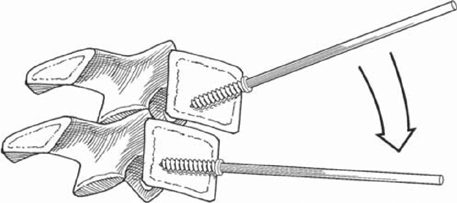20 G. Alexander Jones and Edward C. Benzel Unilateral or bilateral cervical facet dislocations may be reduced during a ventral fusion and fixation procedure. This technique is arguably safer than closed reduction with traction or manipulation under anesthesia, and, if successful, may eliminate the need for a staged ventral and dorsal procedure. Several techniques are described here. They may be safely used to restore anatomic alignment prior to fixation and fusion. Open reduction is an option as a primary means of reducing cervical facet dislocations. It may also be used in the event that cervical traction is unsuccessful in restoring alignment. Care should be taken to perform a complete diskectomy and to take down the posterior longitudinal ligament prior to reduction. If this is not done, the reduction maneuver could cause a fragment of disk or bone to impact the spinal cord during the reduction process, with potentially devastating consequences. It is emphasized that in the case of a severely comminuted facet fracture, an open ventral reduction is less likely to be successful. Uncommonly, the dislocation may prove difficult, if not impossible, to reduce, thus requiring an additional dorsal approach. Radiographic confirmation of the reduction should be obtained prior to placement of a bone graft and plate. This may be accomplished with intraoperative plain radiographs or fluoroscopy. Patients who are not already intubated upon arrival in the operating room should be submitted to an awake fiberoptic intubation to minimize the risk of further neurologic injury. Distraction of the interspace can be accomplished in a controlled manner during the operative procedure. This obviates the need for traction. Several techniques may be used for reduction. Caspar distraction pins may be inserted into the vertebral bodies, with the shafts positioned at a divergent angle of 10 to 20 degrees (Fig. 20.1). Bringing the pins into a parallel orientation and placing them in the distracter, followed by controlled distraction, often results in disengagement of the facets (Fig. 20.2). The rostral level is then translated dorsally, occasionally with the application of moderate pressure, to restore alignment.
Anterior Open Reduction Technique for Unilateral and Bilateral Facet Dislocations
Description
Expectations
Indications
Contraindications
Special Instructions, Position, and Anesthesia
Tips, Pearls, and Lessons Learned

Stay updated, free articles. Join our Telegram channel

Full access? Get Clinical Tree







